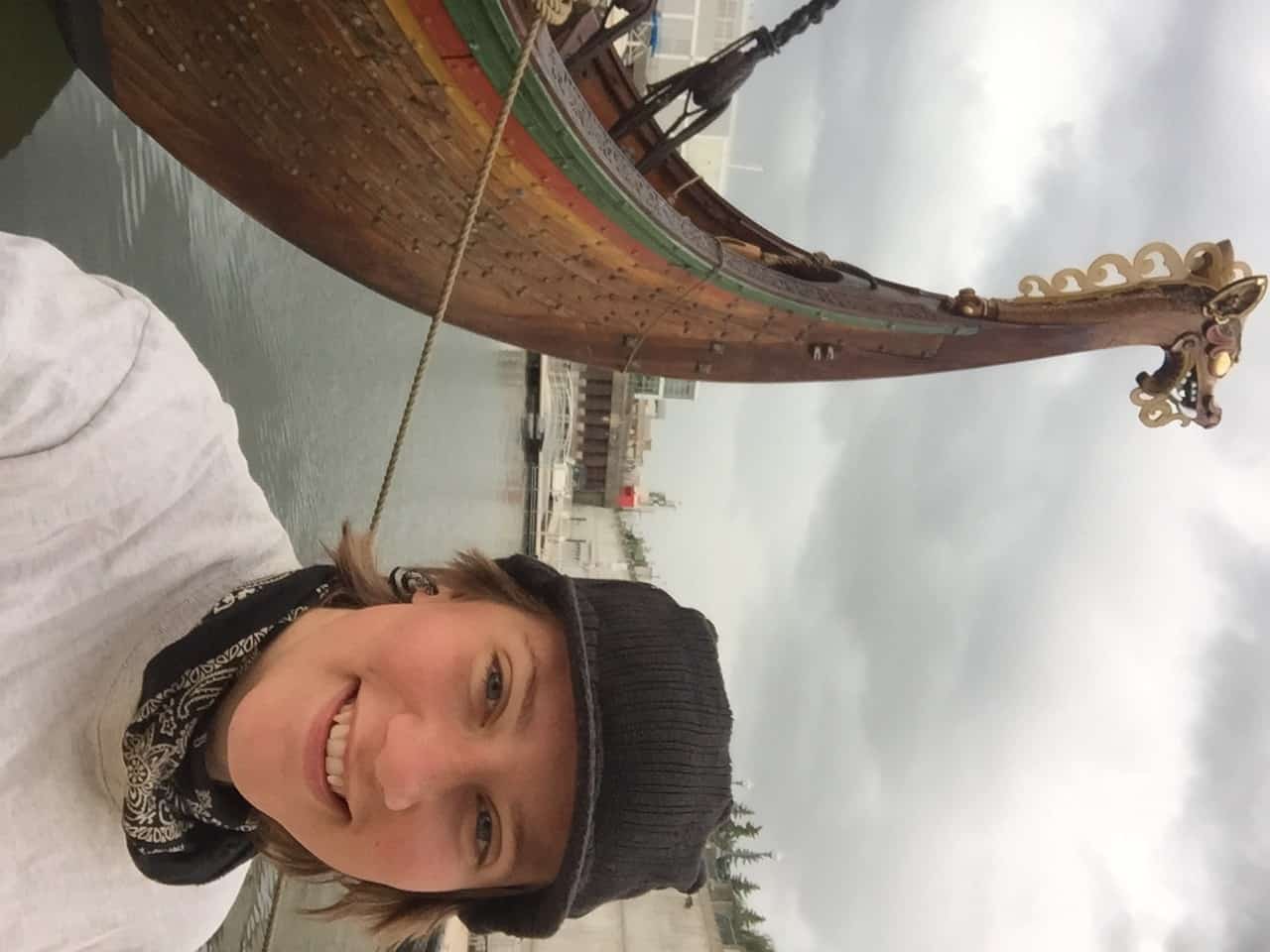On July 1st, the world’s largest Viking ship, Draken Harald Hårfagre, will arrive in Toronto for the Redpath Waterfront Festival. The 114-foot Draken left port from Haugesund, Norway, in April and is crewed by thirty-two sailors from Norway, Sweden, USA, Canada, Estonia, Russia, Spain, France and the UK.
We contacted one of the sailors, nineteen-year-old Anna Spring (who was chosen from over 4000 applicants worldwide), to find out what it’s like to sail a Viking ship.
SDTC: How did you get into sailing?
AS: When I was fifteen I began sailing for high school studies aboard the schooner Harvey Gamage. I instantly fell in love with the ship and sailing. The following year I got aboard the Norwegian ship Sorlandet. We sailed around the Atlantic for nine months and also got a school credit. During the summers, I have been sailing as crew aboard tall ships and have also done some rigging. I have just finished the first of four years at the Maine Maritime Academy where I plan to graduate with a mate’s license. Since early May this year, I have been on board Draken and will get off in August in Green Bay, Wisconsin.
What is your job on Draken?
I am a volunteer, which is basically a deckhand. I stand watch, steer, do lookout, do the dishes when needed and keep up the maintenance on the ship.
What has the journey been like so far?
It has been an epic journey, a pretty good sailing across the Atlantic. We did have some rough weather that was pretty exciting. We didn’t have any really serious situations or injuries on board, but we had to put on survival suits when the weather got crazy. The sails are so big that it takes EVERYONE on board to set and strike the ship. That can be a pretty dangerous manoeuvre in rough winds. So we did have to do some sail-handling in very rough weather, which is dangerous but the crew is really experienced and competent so we didn’t have any major problems. It was definitely scary sometimes; the ship is very powerful and you have to be aware of your surroundings.
Once, we were striking the sail and the wind came in a bad direction. So when the sail was coming down the blocks in the corners of the sail were whipping around like crazy. The blocks are heavy and much bigger than your head, and it took a while to tame the sail. That was really scary; the wind had taken over everything. And that was not on the Atlantic – it was actually just outside of Quebec (St. Lawrence River).
What is your advice to other young women who are interested in this profession?
The maritime industry is very male-dominated, so it can be challenging sometimes being the only woman on board. At the school I’m going to now, 18% are women, so there are not that many of us. But you just have to know what you want to do. You have to have a good attitude about it and be persistent.
What do you love about this job?
The job on Draken is unlike anything I ever had or have done. Just to be thrown into crossing the North Atlantic on an open deck of a ship is pretty crazy. The other tall ships I have worked on have not been the most glorious life but at least we had a place to go down below deck and MAYBE take a shower and dry our clothes. Draken is a little bit more rough than the other ships I have worked on, but that’s what makes this job so awesome!



 Follow Us On Instagram
Follow Us On Instagram
